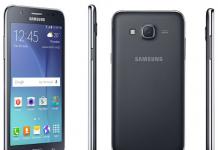Open and closed, full-size and in-ear, wired and wireless, dynamic and reinforced - in terms of the variety of breeds, the headphones on the market today can easily compete with dogs or aquarium fish. They also differ from each other in origin and purpose, impedance and sensitivity, frequency range and a host of other parameters, not to mention the amounts on the price tags. Not all of these characteristics are equally important. Which of them should you pay special attention to when choosing a suitable model, and which ones can you ignore with a clear conscience? Let's figure it out in order.
FORM FACTOR
Where does the choice of headphones begin? From the idea of what exactly we need them for, and how exactly we will use them. And also with prioritization. What is more important to us - sound quality, convenience or price? Having decided on these questions, you can choose the appropriate headphone design for yourself - in-ear, on-ear or full-size.
- In-ear headphones

The smallest type of headphones. These tiny devices play music deep inside the head by plunging into the ear canal (which is why they are also called in-canal devices) and sealing it tightly using special foam or silicone tips. Because of this, plug-in models have good ergonomics and high noise insulation, and the latest audio technologies provide their top models with excellent sound. The combination of these advantages turns the “plugs” into universal devices for any occasion - they are suitable for outdoor enthusiasts, audiophiles, and professional musicians. And their ability to reliably protect against outside sounds is especially useful for those music lovers who regularly listen to music in noisy transport. In-ear headphones are divided into wired, wireless, connected with a cord/headband and completely wireless True Wireless models.
- In-ear custom (CUSTOM HEADPHONES)

A special offer is available to the most advanced users of in-ear headphones - custom models. These are unique headphones that, like an expensive suit, are made according to the customer’s individual measurements. In order to order such a model, you must first make an impression of your ear canal from a specialist audiologist. This cast will then be sent to the manufacturer, who, using the most precise equipment, will produce the only headphone in the world that accurately reproduces the shape of the customer’s ear canals. Custom models not only fit perfectly into the owner’s ears, ensuring ease of use and the absence of unpleasant sensations even after many hours of listening, but also provide unprecedented sound insulation, thanks to which even in the noisiest place you can easily hear the smallest details in your favorite music.
- On-ear headphones

This is a well-known classic design of headphones with cups that fit tightly to the auricle. According to many developers, it is this design that provides the optimal balance between cost, convenience and musicality - the relatively large size of the housings allows you to install decent sound emitters inside without extra costs, and the relative lightness eliminates unnecessary pressure on the head and provides the possibility of long-term listening. Thanks to this balance, many on-ear models can be equally well suited for home and portable listening, giving audiophiles the opportunity to kill two birds with one stone. Those who are looking for especially stable on-ear headphones for jogging and fitness should take a closer look at models with non-standard fastenings - special behind-the-ear clamps or behind-the-neck bands.
- Over-ear headphones

The largest models are also called covering or monitor. Equipped with large cups and spacious ear pads that can completely cover the auricle. Despite their bulkiness, such structures are not as massive as they seem at first glance - the weight of most models does not exceed 300 grams. However, some “heavyweights” exceed half a kilo - in order to relieve the head from their pressure, designers often have to equip them with special self-adjusting headbands for uniform weight distribution. In the past, over-ear models were intended for home and studio use, but recently large headphones designed for mobile devices are increasingly appearing on the market. On their territory, they are able to win a convincing victory over other types of headphones, because the large size of the earcups eliminates the need for designers to make compromises and allows them to use sound emitters of the maximum caliber, and the cups that cover the ear do not put pressure and are definitely more comfortable than on-ear headphones.
CLASSIFICATION BY PURPOSE
What are headphones for? To listen to music, right? Of course! But not only that. Let's look at a few individual cases.
- Gaming headphones/HEADSETS

Gaming models are easily identified by their built-in microphones, and often also by their specifically bright design, which risks seeming too aggressive for the taste of ordinary users. The right headphones for gamers are distinguished by an expressive depiction of space, thanks to which the player can quickly understand the position of the enemy, as well as a rise in the midbass region, due to which special sound effects - explosions and shots - acquire additional scale.
- Sports headphones

In order not to let the owner down when doing sports or fitness, these headphones are usually characterized by reduced weight, thoughtful ergonomics and a secure fit in the ear or on the head. The increased reliability of the design allows sports headphones to easily withstand overloads, providing them with a long service life, and the moisture-resistant housings are not afraid of either rain or sweat. Developers of sports models often experiment with design, replacing traditional temples with more ergonomic options with behind-the-neck or behind-the-ear fastenings, and complementing simple attachments with earhooks/ribs, etc. These options are great not only for athletes, but also for anyone who likes to listen to music while running or at least on the go.
- PROFESSIONAL/STUDIO headphones

These headphones are designed for studio use and are designed with professional sound engineers in mind. High detail and lack of sound coloration, characteristic of the performing style of such models, allow them to be used not only at work, but also at leisure as High-End class home headphones. Thanks to their ability to demonstrate subtle nuances, such models are perfect not only for professionals, but also for music lovers who prefer neutral/smooth/unembellished sound and are prone to analytical listening.
- DJ headphones

The closed-back design and high-pressure ear pads of the DJ headphones provide the high level of noise isolation needed to handle the pounding dance floor. The hinge system provided in most of these models allows you to fold them for easy carrying, and the rotating earcups allow you to monitor with one ear (you can hear the mix both in the headphones and in the hall at the same time). The sound of DJ headphones is characterized by enhanced bass response, making them suitable not only for DJs, but also for anyone who has a passion for club music.
Design / TYPE OF EMITTERS
In headphones of a classic design, a pair of speakers is responsible for sound reproduction. But today this is far from the only option! Along with dynamic headphones, the market includes reinforcement, electrostatic, planar (they are also often called isodynamic), as well as exotic products of their crossing with each other.
- Dynamic headphones

Magnet, voice coil and membrane - in the century and a half that has passed since the invention of the speaker, its fundamental design has not undergone noticeable changes. But during this time, several generations of engineers managed to extract the maximum of its sound potential from this design! It is no coincidence that dynamic models still occupy the lion's share of the headphone market, found in any category from miniature in-ear headphones to large-sized High End monitors. The musical abilities of dynamic headphones largely depend on the size of the membrane. The larger its caliber, the wider the range of available frequencies. In the top models of High End headphones, serious speakers with a diameter of 40 mm and above are responsible for the sound - that’s why their cases are distinguished by such impressive dimensions.
- Armature headphones

The full name is a radiator with a balanced (or balanced) armature. Armature drivers were once used in hearing aids, but over the past decade they have increasingly entered the field of personal audio. This is not surprising given the combination of microscopic size and excellent musical qualities that have made the fittings indispensable in the development of high-quality in-ear plugs. If in the dynamics the magnet is fixed motionless, and the vibrations are produced by the voice coil, then in the armature everything is exactly the opposite: the coil rests in place, and the oscillatory movements are performed by a horseshoe-shaped magnet to which the diaphragm is attached. This design ensures an accelerated response of the diaphragm to electromagnetic pulses and, as a result, a minimum level of sound distortion. Armatures produce clear, spatial and beautifully detailed sound, and also perfectly reproduce vocals, but they cost significantly more to produce than speakers, so armature headphones can only be found in the middle and top price segments. The fittings are used to make not only expensive high-end headphones, but also professional headphones for musicians and sound engineers.
- Multi-band armature headphones

In addition to the high cost, armatures have another drawback - the limited frequency range, especially at the bottom: when working alone, the armature driver copes excellently with mid-frequencies, but suffers slightly in the bass. Then why not add another armature driver to it? Or not one, but two or three? The microscopic dimensions of the fittings allow developers to squeeze several sound emitters into the body of in-ear headphones, distributing responsibility for different parts of the frequency range between them using frequency dividers - crossovers, similar to those used in large multi-band speakers. In top models, designers manage to place up to twelve drivers, but it is better to start getting acquainted with this type of headphones with relatively simple two-driver models: adding a second sound emitter significantly improves the bass response, but does not have a very significant impact on the price tag.
- Hybrid headphones

The speaker confidently copes with bass, and the fittings perform excellently at mid frequencies. What happens if you connect the armature to the speaker? A hybrid in-ear earphone will be released, combining the advantages of both technologies. Each of them in the hybrid has its own area of responsibility: the speaker is responsible for low frequencies, one or more fittings are responsible for the middle and top. The performing style of hybrids combines the richness and drive of dynamic sound with the precision and detail characteristic of armatures. The disadvantages of hybrids include their high cost, as well as relative bulkiness: the need to squeeze in a speaker forces the headphone housing to be made significantly thicker.
- Planar headphones

Also known as isodynamic. In ideal dynamics, the membrane should move evenly, like a piston. The reality differs significantly from the ideal: in the center, where the coil pushes it, the membrane instantly moves from its place, and in other areas it lags, deforming and introducing distortions into the sound picture. How to eliminate this shortcoming? You can try this: unwind the coil and apply it directly to the membrane in the form of thin conductive tracks, and place the membrane itself between two magnets. In this case, the coil will be evenly distributed over the entire area of the membrane, ensuring uniformity of its vibrations. This is exactly how the sound emitter in planar headphones works. Their sound is particularly accurate and balanced. Planars also have their drawbacks: due to their design features, they are heavier than speakers - both in weight and in the complexity of “drive” for the amplifier... and they are significantly more expensive./
- Electrostatic headphones

These headphones are true aristocrats in the world of personal audio: their production is so complex and expensive that only the most desperate perfectionists are ready to undertake it. All existing electrostat models in the world can literally be counted on one hand; each of them has a cult status. The sound source in electrostatic headphones is a thin plate located between a pair of flat multilayer electrodes. A constant voltage is applied to the plate, and a high-voltage signal is applied to the electrodes. When the voltage between the electrodes changes, the plate moves, generating acoustic vibrations. The thinness of the membrane and the speed of its response provide electrostats with the clearest, most spacious and natural sound that can be heard from headphones. The disadvantages are sky-high price tags and high requirements for amplification: a conventional amplifier cannot cope with such a load; electrostats require their own specific type of amplifier.
ACOUSTIC DESIGN type
An equally important influence on the character of the sound is exerted by the body of the headphones, or more precisely, the acoustic design of the cups. According to this parameter, headphones are divided into three types: open, closed and semi-open.
- Open headphones

To distinguish open headphones from closed ones, a quick glance at the back surface of their ear cups is enough. If there are holes in the back through which the speaker can be seen, it means that we have open models in front of us. They freely transmit sound in any direction. Their main advantage is their free, natural performing style: the sound of the speaker does not overlap with reflections from the rear walls, does not mumble and is not accompanied by box overtones. Just like audiophiles love! True, along with the music you will have to listen to a lot of noise from the outside - the sound insulation of open models is practically zero, so they are not suitable for listening in noisy conditions. For working in an office or listening to music at night - most likely the same will not be suitable, because the sounds reproduced by open headphones will be heard by others.
- Closed headphones

If the ear cups are tightly sealed, we are dealing with closed models. Closed headphones have good noise insulation - you can take them for a walk down the street or on a trip on public transport, and the absence of sound leakage to the outside will allow you to listen to music without disturbing family members or work colleagues. The style of closed headphones is characterized by a special assertiveness of low frequencies, provided by reflections of sound waves from the inner surface of the cups. However, modern technologies allow designers to create closed models whose sound is practically indistinguishable from open ones.
- Semi-open headphones

In addition to open and closed headphones, there are models of an intermediate type on the market - semi-open. Their developers leave holes in the walls of the cups, but control the air flow passing through them in order to match the musicality of open headphones with the noise insulation of closed ones, while trying not to inherit the disadvantages of both designs.
Sensitivity
At the same volume level on the player or amplifier, different headphones play differently: some are deafening, others are barely audible. This is not surprising, because all models differ from each other in sensitivity - the level of sound pressure that they can achieve at a given input signal level. Sensitivity is measured in decibels and ranges from 60 to 140 dB. The higher the sensitivity, the louder the headphones play. Theoretically, its value, indicated in the technical specifications, can help you find the loudest model for playing music in conjunction with a low-power smartphone or pocket player. Unfortunately, in practice, manufacturers measure the sensitivity of their models in completely arbitrary ways (to voltage or power) and the results indicated may not mean anything / cannot be compared with each other.
Impedance
What is impedance? Translated from English, this word means total resistance, measured in ohms and can reach from 4 ohms for miniature in-ear headphones to many hundreds of ohms for bulky High-End class headphones. The impedance of the headphones determines the power of sound sources: low-impedance models with a resistance of no higher than 40-50 ohms can easily work with even the weakest devices such as mobile phones and are excellent for use outside the home. High-impedance examples are not ready to perform with portable equipment without additional amplification, but they allow the amplifier to operate with less distortion, produce cleaner sound and suffer much less from overloads. That's why high-impedance headphones with an impedance of 200 ohms have so many adherents among audiophiles and professionals.
Frequency range
Ideally, everything is simple. Frequency characteristics should indicate the range of frequencies available to the headphones: the further apart the range boundaries are, the better their musical capabilities, right? No, in reality everything is a little different. The point is a little trick - the frequency range can be measured in different ways, there is no single standard. Therefore, manufacturers, by changing measurement conditions, can obtain as beautiful results as they like. As a result, models with an immodest range of 5-30,000 Hz may in fact sound an order of magnitude worse than models with a nondescript 50-16,000 Hz. So the best way to judge the musical abilities of headphones is by ear. And you don’t have to pay much attention to their frequency numbers.
Cable

The cable is a detail that almost no one looks at when buying headphones. And it’s completely in vain, because its design can have a noticeable effect on the sound. The cables of many Hi-Fi and High End models are made from special oxygen-free copper OFC or from single crystals. This allows you to minimize losses and distortion during audio signal delivery. Cables of different price ranges differ not only in conductor, but also in sheath: unlike budget fabric braiding, braiding made of durable and flexible Kevlar thread provides high wear resistance, as well as resistance to tears and frequent bending. For ease of use, manufacturers can give the cable different shapes. The twisted cable for home full-size headphones eliminates problems with tangling, but begins to spring back when you try to stretch it to its full length. The flat cable of miniature in-ear headphones does not get tied into knots when you try to remove them from your pocket. Even more important may be the presence of a removable cable holder. This allows you to exchange the supplied cable for a better option or deal with its replacement yourself in case of damage, avoiding repairs or purchasing new headphones.

In budget headphones, the filling of the ear pads is made of simple foam rubber, in premium ones - from a special foam mass with a memory effect: approximately the same can be found inside expensive orthopedic pillows. It’s impossible to feel the difference in a few minutes of quick acquaintance, but after an hour or two of close physical contact, you begin to clearly realize what the extra money was spent on. The shell of the ear pads is as important as the filling: in cheap models it is made of synthetic fabric or artificial leather, in both cases the ventilation is not the best, and over time the presentation is lost (although today you can also find very high-quality leatherettes that are not inferior to natural leather). Expensive headphones have ear pads covered with velor or genuine leather: the first option is more comfortable and ergonomic, but the second lasts an order of magnitude longer. Almost all Hi-Fi and High-End models have replaceable ear pads - in the case of velor, it is better to stock up on a couple of spare copies in advance. Experimenting with replacing different types of ear pads can not only make headphones more comfortable, but also adjust their sound by changing the acoustic properties of the space between the headphones and the ears.
Nozzles

Ear pads for in-ear headphones are often referred to simply as ear tips. Each human ear is individual, like a fingerprint. Not everyone is suited for an in-ear earphone! That is why such models require a generous set of attachments of various shapes and sizes. The minimum set is three simple silicone tips of S, M and L sizes, but it is much better if the manufacturer was not greedy and added silicone tips with two and three petals, which can provide a much more secure fit in the ear canal. It’s even better if the kit also includes attachments made from a special foam mass - even though these parts last no longer than two to three months, they guarantee excellent fixation and maximum insulation from external noise, and also provide special comfort, since they follow the shape of the ear with maximum neatness. But the coolest option, of course, is individual ear tips made from ear impressions. You can order the production of these from us at Dr.Head - get better noise insulation, comfort and sound from your headphones.
Additional abilities
All headphones can play music - some do it so-so, others excel. But there are special abilities that not all models have. What do manufacturers offer today?
- Active noise cancellation

The active noise reduction module is a bunch of sensitive microphones with a compact audio processor: the microphone picks up external noise, and the processor inverts it in phase and mixes it with the sounds of music coming from the speakers in the headphones. As a result, the noise is combined with anti-noise and is reset to zero, and the user hears clear music, even when there is hellish noise around (subway, plane, street). Active technology copes especially well with the most intrusive noises - for example, with the low-frequency rumble of the subway. And when you get out of the subway, you can turn off the noise reduction to save battery power.
- Built-in microphone/headset

You can also listen to music from your smartphone through regular headphones. But it is much more convenient to do this using models with a built-in microphone that can perform additional work for a mobile headset. With their help, you can answer the phone call and listen to your favorite tracks in excellent quality. And the presence of a miniature remote control allows you to adjust the volume, pause the music or go to the next track without removing your smartphone from your pocket. Before purchasing such models, you need to clarify which mobile platform they are compatible with - Android or iOS. Both headphones are externally indistinguishable, but they differ in the wiring of the four-pin minijack and cannot change their roles with each other.
- Built-in DAC

Does your smartphone lack musical capabilities to truly please your ears? It's all about its filling, which is clearly not designed to reproduce high-quality audio. The problem can be solved using headphones with a built-in DAC - instead of the audio output on a mobile device, they connect to its digital port, for example, to Lightning on the iPhone, in order to process the music on their own, with higher quality. And immediately play it through your speakers.
- Bluetooth

Bluetooth technology allows you to walk with headphones on without getting tangled in wires along the way. The main thing is not to pay for this convenience with worse sound. The reason for the degradation may be the heavy compression that audio undergoes when encoded for transmission via Bluetooth. To minimize losses in sound quality, when choosing Bluetooth headphones, you need to pay attention to what types of music encoding they support. The most preferable options are models that support aptX HD or LDAC encoding technology. It is important that these codecs are supported not only by the Bluetooth headphones themselves, but also by the sound source - a smartphone, tablet or audio player.
- Wireless connection
Want to walk around your apartment without taking your headphones off your head? The wire does not give you a chance to move away from the stereo system to a distance of more than three meters, but wireless models allow you to easily reach anywhere - to the sofa, refrigerator or balcony. The most affordable option is wireless headphones operating in the infrared channel: they are quite inexpensive, however, they transmit music without much brilliance, suffer from background noise and provide reception at a distance of no more than ten meters. However, their capabilities are quite sufficient for listening to television programs on the couch. A more serious option is models that operate on FM radio frequencies - they are much less susceptible to interference and are ready to increase the communication range to several tens of meters. If you're looking for the best wireless music experience, consider wireless headphones with digital audio encoding. They are more expensive, but they cost virtually no losses when transmitting music. The top models of these headphones are equipped with advanced Kleer and DSSS digital encoding technologies to broadcast audio signals with uncompromising quality and full dynamic range. Their sound is not inferior to the most decent Hi-Fi models! However, so do the price tags.
Eventually
Xiaomi is once again acting on its desperate plan: to release a new product with a dumping price in a market segment that is unusual for fans. This time the result is the Xiaomi Hybrid headphones - the first and, perhaps, the only hybrid headphones for $18.5.
Most often, headphones use the familiar dynamic (membrane) drivers. Much less common are the so-called armature drivers, which are an interesting design: a U-shaped metal plate, inside of which a voice coil (armature) is located. Electrical signals cause the magnetic field to oscillate, causing the armature to rotate around its axis, transmitting force through a special lever to the membrane, which as a result produces sound waves.
wikipedia.orgDynamic drivers are excellent at reproducing low frequencies, but not very good at reproducing high frequencies. Reinforcement - on the contrary. The bass in them is extremely specific, flat. Hybrid headphones are a design that combines drivers of both types. Thanks to this, the range of reproduced frequencies and sound quality become an order of magnitude higher than that of headphones that have only some parts.
The new development is equipped with a dynamic and armature driver. Due to this, according to company specialists, they were able to create a unique product with very high sound quality. Did it really work? Let's check it now.
Characteristics
Xiaomi Hybrid has good characteristics for its size and price, especially considering that the dynamic range and power are described truthfully:

The headset (yes, the company initially promised headphones, but presented just a headset) comes in a neat white box. On the side edge of the box you can find the inscription Designed by 1More. This is one of the coolest valve manufacturers in China. So we're dealing with a rebranding, but not really. The original 1More promises slightly better sound, but comes at a higher cost.
The kit includes the Xiaomi Hybrid itself, three pairs of interchangeable ear pads (sizes XS, S, L) and a small booklet with product information.
Despite the original internal structure, externally the headset looks quite ordinary, although very stylish. The headset wire is made of high quality rubber. From the plug to the remote control with a built-in microphone, it is covered in Kevlar braid. Further, to the headphones - already bare rubber, but non-freezing and without memory effect. The Xiaomi Hybrid case is metal, with a pleasant shine. The plug is straight, also metal.
The headset is equipped with three buttons: back, start/pause, forward. Works with Android devices, however, in some applications the rewind buttons may not work or act as volume controls. The buttons are comfortable, large, and press well to the touch thanks to the convenient engraving. The + and – buttons do not work on iOS.
The microphone is made using MEMS technology and provides intelligible speech transmission from a distance of up to 30 centimeters.

The seating position is a very strong point of the Xiaomi Hybrid. They fit like a glove in my ears. Replaceable ear pads are convenient: with their help, you can adjust the Xiaomi Hybrid to almost any ear. At the same time, there is no feeling of blockage of the ear canal: the isolation is not absolute, but those standing nearby are unlikely to hear the music. It's worth noting that choosing foam ear pads makes sense, but the headphones will start to feel quite bulky.
At the same time, Xiaomi Hybrid does not cause discomfort when worn under a hat: it does not stick out and does not touch anything. Well, the low weight only emphasizes these advantages: after an hour of wearing, you simply forget about the headphones.

Since this solution is intended to be used as a portable solution, testing was carried out on a smartphone using the system’s standard player. FLAC 24 bit/192 kHz and MP3 320 kbps tracks, converted from lossless material using Lame 3.91, were selected as test material.
- Rap/rapcore: Biohazard, R.A.T.M. The headphones handled the material perfectly, excellent separation of low and high frequencies, the sound was clean and transparent. The first team lacks the usual pressure a little, and the kick drum sounds downright dry.
- Hard rock: Queen, Black Sabbath. The sound is as it should be. The guitar parts sound great, the bass guitar is quite ringing and intelligible, the vocals are revealed in all their glory. It is on this material that the wide range reproduced by headphones is perfectly monitored.
- Jazz/blues: Ornette Coleman, Dizzy Gillespie, Louis Armstrong. The saxophone is my little disease. And with Xiaomi Hybrid it sounds amazing, coming to the fore.
- Metal: Testament, Therion, Behemoth. But the headphones coped poorly with this material. The stage is wide, the detail is amazing, but the low frequencies are dry, as if compressed. And if Therion's symphonic tracks sound excellent, then Behemoth's drum barrage turns into an electronic sound that is not pleasing to the ear.
- Electonic music: Godflesh, NIN. Great! Sounds much better than analogues in the range of 10–30 dollars.
- Breakcore: Drumcorps, Motograter. Hybrids from Xiaomi work perfectly with all-electronic material. Everything that should be reproduced is reproduced; unnecessary sounds (including sibilants) are completely absent. But the warm, tube Motograter with the 2003 album shows, perhaps, the only problem with this design. The bass is not booming, but flat; it feels rather weak, although it sounds clear and very intelligible.
conclusions
The headphones turned out to be quite interesting, but ambiguous. For the average music lover with a smartphone, this is a very good find. The cost is more than repaid both in terms of durability and sound. And yet, Xiaomi Hybrid is definitely not suitable for bassheads and simply lovers of aggressive bass, even if this bass should ring and clang, and not thump.
In the world of headphones, an exaggerated opinion has already practically taken hold: “dynamics” provide good bass and energy, “armatures” provide intelligibility and detail at mid and high frequencies. What if you combine these advantages in one headphone? This is what the developers thought and created hybrid headphones, in which a dynamic and reinforcing emitter are combined in one housing. One of the most affordable solutions in this price range is T-PEOS H-100 from the Korean manufacturer SWP Shinwoo Tech.
To begin with, I note that if you are not familiar with the features and design of different headphone drivers, it also explains the principle of hybrid headphones.

SWP Shinwoo Tech is not very well known to ordinary users, but in fact this company was founded in 1986 and produced audio components for most of the major players in the mobile market: Sony, Nokia, Samsung, Motorola and LG. Of course, over the years, considerable experience in audio solutions has been accumulated, and when the company decided to independently enter the headphone market, the engineers did not waste time on trifles and relied on such an unusual solution as hybrids. What’s most interesting is that T-PEOS managed to keep the price at a very reasonable price of about 150 dollars (for comparison, Atomic Floyd Super Darts headphones of a similar design and design sell for 200 euros).
- Emitter: balanced anchor and dynamic in each earphone
- Impedance: 32 Ω
- Sensitivity: 101 dB/mW @ 1 kHz
- Frequency range: 20 Hz – 20 kHz
- Maximum power: 100 mW
- Plug: 3.5 mm, gold plated
- Cable: 1.2 m, symmetrical
- Weight: 21 g
Packaging and delivery
From the first glance at the packaging, I realized that the developers managed to incredibly surprise me. The fact is that the headphones are supplied in a solid and durable wooden box. Without any compromises like plastic, cardboard and even plywood: real wood, with small hinges, varnished, with a logo burned into the lid. To protect all this splendor there is also an outer box made of hard transparent plastic. 
Immediately under the lid there are headphones in a plastic tray and some attachments. Having removed the pallet, we get access to what we decided to put in the kit. And here comes the second surprise: in several years of experience with headphones, I have never seen such a package. With the headphones you get a large supply of tips (there are different sizes and even foam) and a zippered case, this is traditional and not surprising. But besides this, you will find in the box an excellent carabiner for hanging the case on your belt and a cord with two locks, which can be used to hang the headphones on your neck, like our grandmothers hung their glasses. 
In general, in terms of configuration, the developers managed to exceed the traditional bar “the kit contains everything you could want” with a margin. 
Design and wearing comfort
As soon as you take the headphones in your hand, you feel their monumentality. They are made of silver polished metal, and due to this they are slightly heavier than most other headphones, such solidity immediately inspires confidence. There are colored stripes on the body, in my version - black and red, there are options with other colors. There is also a variant with one colored ring and a notch on the body. At the end of the case there is a logo and the model name. 
Despite the slightly increased weight, the headphones fit very well in the ears; a simple fit and behind-the-ear fit are possible if desired. With a good selection of attachments, wearing is comfortable and does not cause discomfort. Sound insulation is typical for the form factor. 
The cable is colored, matching the color of the stripes on the case, before the splitter - in a fabric braid, after the splitter - a regular one in flexible silicone insulation. The silicone is normal - it doesn’t harden much in the cold. The plug and splitters are reliable, with metal covers. There is a microphone effect, but wearing behind the ear allows you to level it out. 
Sound
The following equipment was used for listening.
- MacBook Pro Early 2011
- in HogMode as DAC/amplifier
- as a player
- Recordings in lossless formats
- as reference IEMs

Before listening, the headphones were traditionally warmed up for 48 hours; no noticeable changes in the sound were detected (as usually happens, but order is order). 
The sound of hybrids is quite unusual for the ear, since almost all frequencies are available here, and in the case of T-PEOS they are also presented in an interesting way, exactly as it should be. In general, the sound is bright, with a simultaneous emphasis on lows and highs, very musical and tasteful. 
The bass surprises with its strength, depth and accuracy. He is very assertive and booming, but does not overwhelm everything else. On the fastest tracks it sometimes lacks speed, but this is perhaps compensated by excellent texture. 
There is a drawdown in the mid-frequency region (the frequency response graph is V-shaped), but this is not perceived as a disadvantage by ear, vocals and most instruments are heard very well, they do not retreat from the raised bass and treble. 
The HF region is also elevated compared to the middle, especially the peaks in the region of 3-5 KHz and closer to 10 KHz make the sound very bright, and occasionally harsh (only on a certain combination of sources/tracks). Except for this - the high frequencies are good, they are extended, light and give enough air. 
The headphones cope well with building a stereo panorama (although they are not something out of the ordinary), the separation of instruments is very good. 
Compatibility
T-PEOS H-100 are quite picky, but adjusted for their detail. They will play quite well with simple sources, but be prepared to hear some shortcomings, especially in the mid and high frequencies. I tried them with the iPhone 4 and was pleased with the results, as well as with the iPod Video. Peos also play well with vintage players, especially with the dark sound champion Rio Karma. I didn’t really like the Sandisk Sansa Clip with these headphones: it has too little control over the deep bass inherent in them, but overall, it’s listenable. 
conclusions
Incredibly interesting headphones in all respects. Good and very unusual sound, affordable price (), excellent delivery set and workmanship. I think that this is the first sign, and in the future we will see many more headphones made using hybrid technology.

It just so happened that my favorite Sony XBA1 earplugs were lost, which led to a painful choice of new headphones for walking.
Of course, it was possible to buy them or the cheaper Sony XBA-C10 model (in theory, these are still the same XBA1), but my soul demanded something more interesting, then I started looking through 2 driver fixtures, and was ready to order the Creative Aurvana In-Ear3, as caught my eye hybrid Sony XBA-H1 and even available in my city.
I think a footnote is needed here
What's happened reinforcing?
These are headphones that use a reinforcement emitter (Balanced Armature, balanced armature), its essence is that the electromagnet is located not on the membrane as in dynamic emitters, but around P figurative anchor which
connected directly to the membrane, this anchor recreates the sound by acting on the membrane.
The advantages of this emitter are high sensitivity and reproduction accuracy, but there is also a big minus: the frequency range that one emitter can reproduce is not so large.
Hybrid
In this case, these are headphones that use 2 different types of emitter, reinforced for accurate reproduction of high frequencies and midrange frequencies and dynamic for low frequencies (bass)
And so back to the headphones
Packaging and equipment
The headphones are sold in this 2nd box



It all looks very impressive in real life.


Equipment
Inside the box, in addition to the headphones themselves, you can find:
1.Large headphone case, which fits cowon C2 without any problems 2.Clip for wire 3.Wrap for wire (I don’t know the scientific name of this thing) 4.2 Sets of replacement ear pads

One of the sets of ear pads has a foam insert for better sound insulation

I should note that this time the foam insert looks more reliable than the one included with the XBA 1
Headphones
The headphones look and feel very high quality, it’s clear that they didn’t skimp on materials.
They have a flat wire, in red and black colors.
Everything looks very laconic - moderately glossy, moderately matte, and thanks to the black-red wire, it is quite bright (conspicuous).
The right earphone has a red insert for easier recognition.

The first thing that catches your eye is the size of the headphones; it’s hard to call them small.

It even became interesting to look live at the sizes H3 and H4 where 3 and 4 reinforcement emitters are used.
But despite the size, I personally found the headphones convenient and comfortable to use.
Sound
It’s worth saying here that I’m not a super audiophile, but I am an experienced music lover and have a good idea of good sound.
What did you listen to?
Mp3 player Cowon C2 and creative x fi titanium
It will be quite difficult for me to convey everything in words, but I will try anyway.
The first thing you notice after the XBA 1 is the natural presence of bass, and you immediately understand that worries about the dynamic driver were in vain; it copes with its task adequately.
Regarding the panorama, it seemed to me that it is larger than that of the XBA 1 but less than that of the Sennheiser HD 558 (although personally, for my taste, sometimes their differences are too large), and is not inferior to the Panasonic RP-HTF600; unfortunately, there is nothing else at hand was to compare.
I can describe the bass as neutral, it doesn’t hammer or mumble, it’s moderately “dry”.
It’s worth writing here that the difference in bass between the Cowon c2 and the creative x fi titanium turned out to be striking; when listening to the Cowon C2 it was quite playful, “filling everything,” while when listening to the creative x fi titanium it acquired a drier monitor character.
I don’t know if a cross filter was used in the headphones, but each emitter was busy with its work, and no “dragging” was noticed.
Apparently, thanks to the dynamic driver, the sound turned out to be more alive than the XBA 1, this applies not only to the bass but also to the midrange (although this may be due to the reinforcement driver)
I don’t see the point in writing a lot about the mid-high frequencies, everything is quite detailed and accurate, if there are gaps, they are small.
You can look at the frequency response; you should pay closer attention to the very first graph.
Despite the fact that the impedance of the headphones is indicated at 40, the fittings have one feature - with an increase in the playing frequency, the impedance will also increase, that is, in order to fully reveal the high frequencies you need to have a fairly “powerful” player.
Conclusion
The headphones seemed to me to be quite versatile in sound, they can be fully recommended to music lovers and novice audiophiles who do not like to carry full-size headphones with them.
For those who want to try the fittings for the first time, I recommend that you first look at the xba 1 and xba c10 models, they are at least cheaper.
Regarding the price - the headphones were purchased for 3990 rubles, which is the lower price range for 2 driver headphones, and cheaper than other hybrids, so I think this price tag is quite justified.
About the cons
I was saddened by the fact that the wire swells quite strongly in the cold.
I would like to see full-fledged foam tips in the kit instead of ear pads with foam inserts.
At the beginning of 2018, KZ presented its new KZ ES4 headphone model.
These headphones are notable for their design, hybrid technology, and price.
I really wanted to try this model of headphones, so I ordered them, received them and listened to them.
And accordingly, why not review them?
The manufacturer states the following specifications headphones:
Resistance: 25 ohmThe headphones arrive from the store in a standard white box. At KZ, all headphones come in similar boxes, the only difference is in the picture on the box:
Frequency response range: 20-40kHz
One 10mm dynamic driver (graphene) + 1 balanced armature driver (Knowles 30095)
Cable: replaceable, with two-pin connector 0.75 mm
Sensitivity: 104dB
Case material: plastic



The headphones themselves lie inside the box on a special bed. The cable is removable. Lies separately under the lid:

The package includes headphones, a cable, two pairs of spare rubber bands and waste paper:

By default, the headphones are equipped with medium-sized elastic bands. I first tried on the headphones with them, then installed smaller ones. I feel more comfortable in them.

The headphones for this model are removable. This is again a common practice of the manufacturer. By the way, in the store you can buy just headphones, like in my review, or a version with a microphone on the cable, it will cost 1 dollar more.
The overall design of the headphones is quite interesting:



The sound guide is covered with a metal mesh:


The removable cord of this headphone model is made in the form of a braided braid. This has become a common solution lately. But I personally don't really like these wires. Although this cord is undoubtedly stronger than a regular one.
The cord braid is soft. Made from a material similar to silicone:

There is a large plastic cover on the 3.5mm plug. It looks a little big, but it’s convenient to take this one when plugging in or pulling out headphones from the player:

L-shaped plug, gold plated:

There is a wire separator in the middle. He is also quite large. Made from plastic:

At the end of each wire there are plugs for connecting headphones:

Due to its shape, the left and right earbuds cannot be swapped. The plug has a groove that simply won't fit into the wrong earphone.
The assembled headphones look like this:


The quality of workmanship and design can be given a solid A.
These headphones are designed for behind-the-ear use. For more comfortable wearing, each plug on the wire has a small insert that holds the shape and bend of the headphones.
But overall, I would probably give the ergonomics and convenience a four. Headphones are not suitable for every ear. They are somewhat large, and each time you insert them into your ear you have to look for a comfortable position.
About the sound:
The sound of these headphones is at budget level. Overall not bad, quite natural, but when you start listening, you can hear that the detailing is rather weak. (listened to on Xiaomi Mi5 smartphone, Xduoo X10 player)
High frequencies are comfortable. The lows are a little skimpy, and the mids stick out a little. But if you consider that the price of these headphones is 17 dollars, we can say that they play normally.
Best of all my music, these headphones opened up when listening to the group “Surganova and the Orchestra”. On bassy compositions and genres, the headphones seemed a bit boring to me. And when listening to classical compositions, there is not enough detail for complete immersion in the music.
Conclusion:
Another budget headphones from the famous manufacturer Knowledge Zenith. They will find their buyer due to hybrid technology, interesting design and low price. Overall, good headphones that don’t catch stars from the sky. They sound exactly worth their price. I'm glad that hybrid headphone technologies are becoming more accessible. We just have to wait for better sound quality.
Can I recommend these headphones for purchase? Yes, I can, if you have a budget close to their cost.
And if there are options to pay extra, then of course it is better to take something more expensive and proven.
That's all. I wish everyone only joyful music. I'm planning to buy +6 Add to favorites I liked the review +34 +41


























